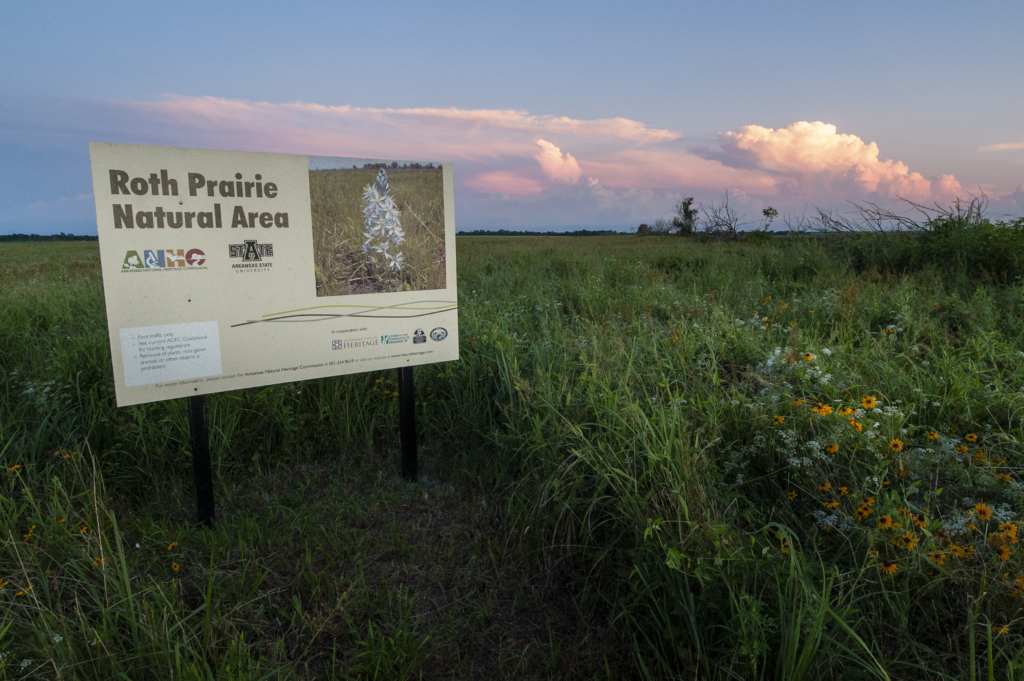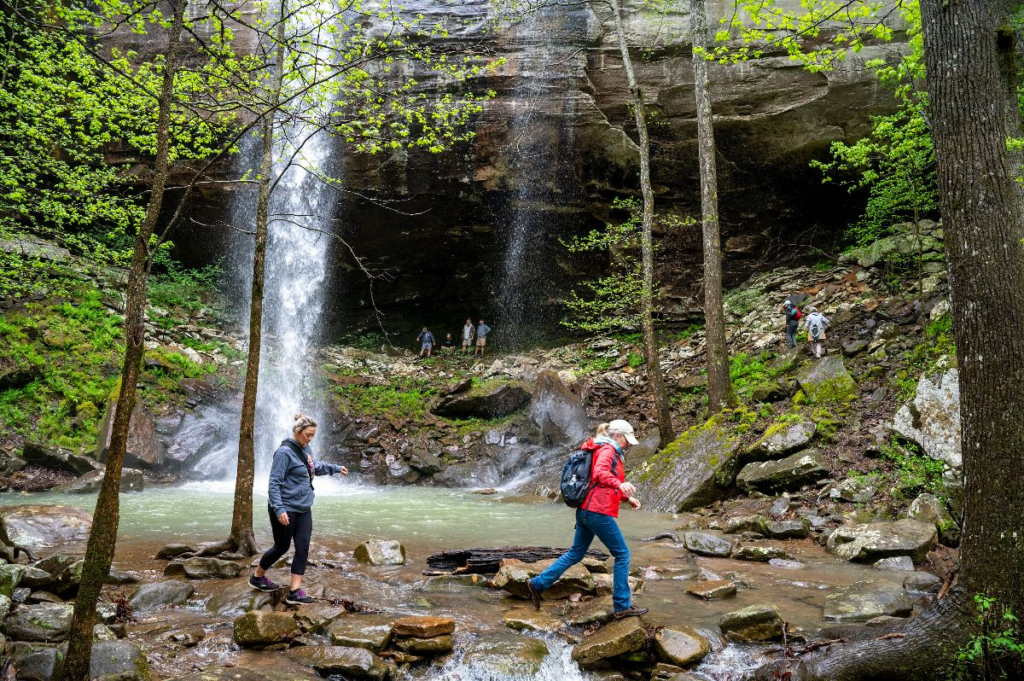The Arkansas Natural Heritage Commission, ANHC, has been tasked with a large role: protecting prime tracts of land that best represent Arkansas’ natural landscape dating back to the early 1800s. This is done through their System of Natural Areas. These lands are specifically managed to preserve and restore habitat that reflects the state’s natural heritage and biodiversity.
This year is a 50th anniversary milestone for ANHC and this work.

Roth Prairie Natural Area in Arkansas County
“We are excited to celebrate 50 years of success in preserving our state’s natural heritage,” said Bill Holimon, agency director at the Arkansas Natural Heritage Commission. “This success has been made possible through a combination of our Heritage Program, our research section, and our Natural Areas Program and many great partnerships. Our Heritage Program continues to advance our knowledge of and help prioritize protection of important natural areas. Our Natural Areas Program supports numerous natural communities and species of conservation concern, sites that also serve as living museums for those interested in being closely connected to nature or want to see what the land in Arkansas looked like in its early statehood.”
Singer Forest Natural Area was Arkansas’ first natural area and was donated by the Singer Company in 1973. Roth Prairie then became the first natural area purchased by ANHC and it came into the fold a few years later. From there the work continued and currently there are 79 natural areas in the state with acreage spread across 50 of the state’s 75 counties.
Since its creation in 1973, ANHC has worked with partners such as The Nature Conservancy, Arkansas Game and Fish Commission, and Arkansas State Parks to protect and manage areas of high ecological importance. Data from the ANHC Heritage program helps identify and prioritize important areas to protect so that conservation dollars are used where most needed. Land is added to the System to protect habitat for rare species from willing sellers as opportunities arise.

Bill Holimon, agency director at the Arkansas Natural Heritage Commission
“We explore and assess needs and opportunities each year to ensure representative examples of the variety of natural communities that occur in Arkansas are adequately protected and to manage for species of conservation concern,” said Holimon.
Protecting these lands is a main priority for ANHC as is spreading the word about their importance. ANHC is a main source in the state for data on rare animals, plants and natural communities. Programs that center on outreach and education have also been created.

Downs Prairie Natural Area in Prairie County
Natural area management plans are updated every few years to stay up-to-date on current research. Habitat management in the form of prescribed fire or invasive species removal maintains or enhances the ecological values those natural areas support by reducing the likelihood that important habitat is overtaken by non-native species such as Chinese privet. This habitat work is key in protecting our natural heritage.
One avenue to understanding the importance of these lands is to see and visit them. ANHC natural areas are open to the public and offer a chance to learn and experience what these protected sites mean for the state.

Sweden Creek Falls Natural Area in Madison County
Some natural areas have trails and interpretive signs and a range of experiences as diverse as hiking to hunting can be found. Some have limited access or amenities to protect the rare species and natural habitat they support and protect. “This is definitely an outdoor experience,” said Holimon.
A main aim of natural areas is for the protection of the rare plants and animals found there. Parameters have been put in place to balance protecting these places and also allowing visitors. “Travel is limited to foot traffic on all but a few natural areas to minimize erosion and disturbance to sensitive habitats,” said Holimon. “Efforts are made to provide safe opportunities for moderate, low-impact public use such as bird watching, photography, scientific research, hiking, education and even public hunting.”
“Some areas or features within areas are not directly accessible by road and may require a significant hike. Trails and parking are not available at all sites and may be very limited at some. Camping and campfires are not allowed. Most natural areas do not have restroom facilities,” said Holimon.
Natural areas are some of the most important conservation sites in the state and visiting them is a means to experience and learn about these special protected places. “We encourage everyone to get out and visit our natural areas,” said Holimon.
For more information on the Arkansas Natural Heritage Commission and their System of Natural Areas, visit arkansasheritage.com/arkansas-natural-heritage/anhc-home.

Rattlesnake Ridge Natural Area in Pulaski County
Arkansas Tourism
Arkansas Tourism, a division of the Arkansas Department of Parks, Heritage and Tourism, strives to expand the economic impact of travel and tourism in the state and enhance the quality of life for all Arkansans. The division manages 14 Arkansas Welcome Centers and employs more than 60 staff members across The Natural State. For more information, visit www.arkansas.com.
Arkansas Department of Parks, Heritage and Tourism
The Arkansas Department of Parks, Heritage and Tourism protects and promotes our state’s natural, cultural and historic assets, contributing to a thriving economy and high quality of life. It is made up of three divisions: Arkansas State Parks, Arkansas Heritage and Arkansas Tourism.

